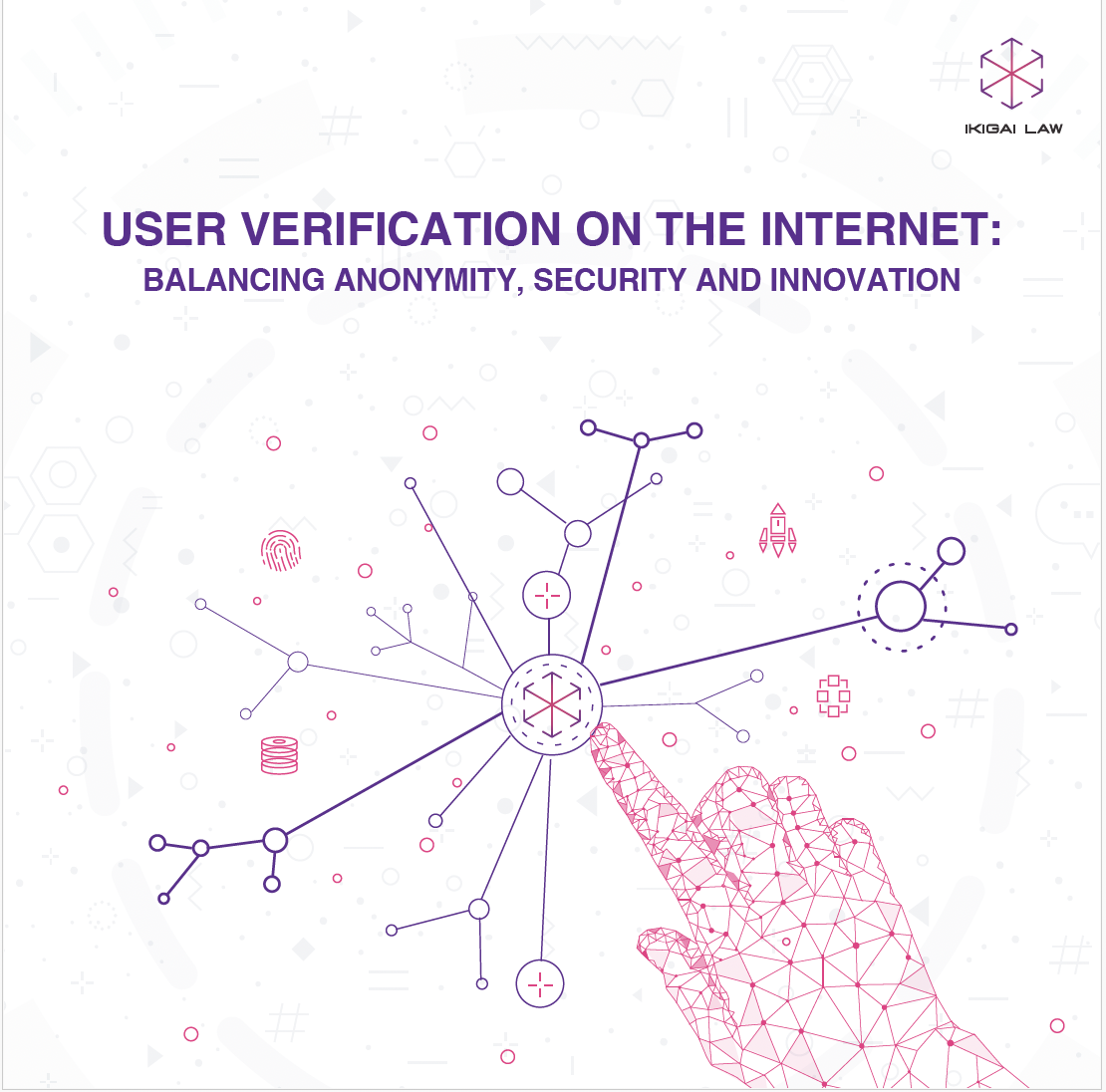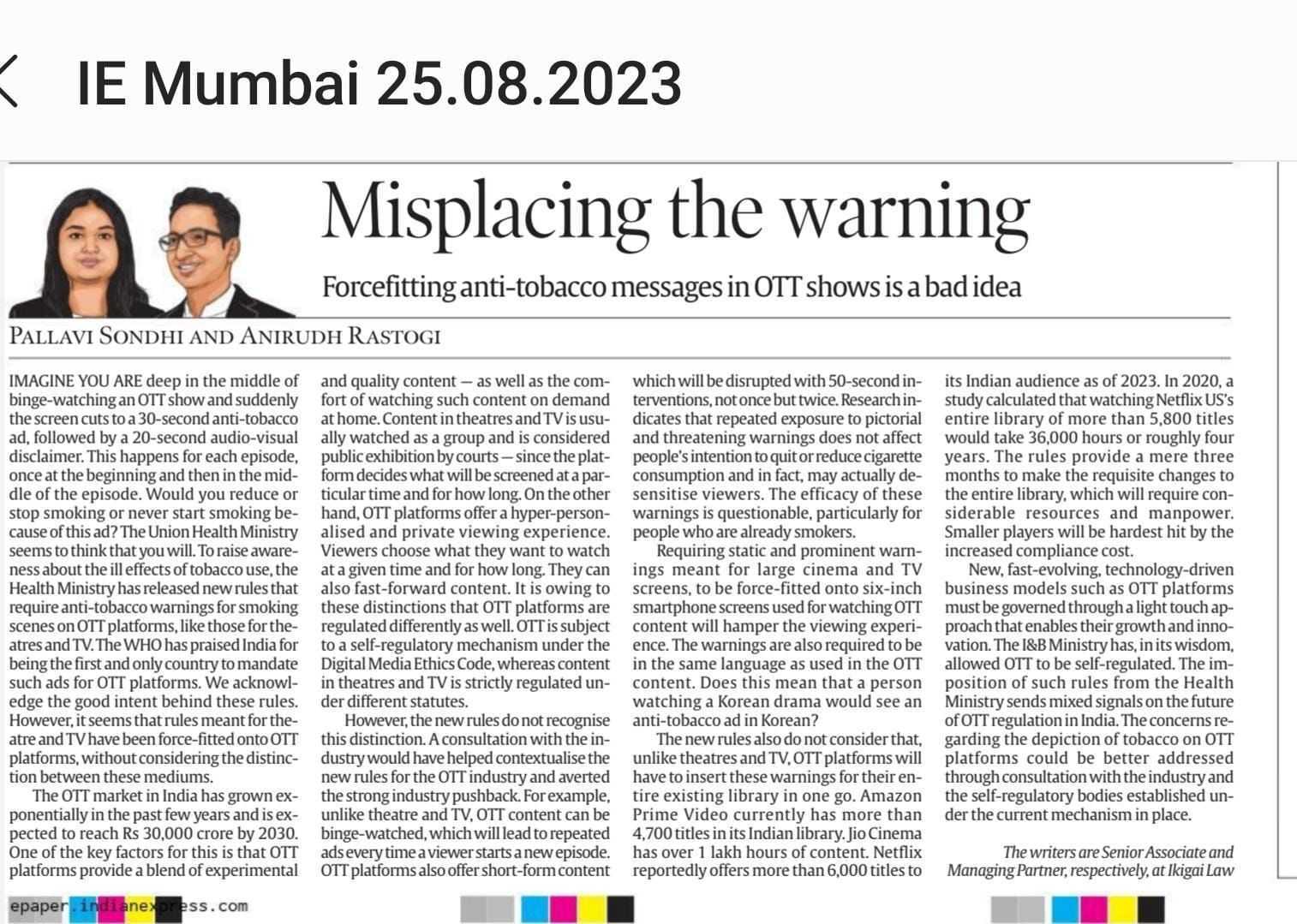A new two percent ‘equalization levy’ applies to e-commerce operators servicing Indian residents with effect from 01 April 2020.[1] India also made a fundamental departure from existing international tax principles, in introducing provisions that will deem income on account of significant economic presence in India to accrue in India with effect from 01 April 1 2022.[2] This means that India can now tax such income. These changes are made in the backdrop of similar Digital Service Tax (DST) measures by UK and France (with deferred collection).These measures are in tune with the sentiment that taxing rights in the digital age can no longer be just a function of physical presence. But, such unilateral measures by countries will result in greater operating cost for Multinational Enterprises (MNEs) with a potential negative effect on the global economy. Therefore, it is essential to design a timely solution that attracts global support to address the challenges of digitalisation.
1. OECD’s Unified Approach
The OECD and G20 nations constituted the Base Erosion and Profit Shifting (BEPS) project to target tax strategies aimed at shifting profits to tax havens. Under the BEPS Action Plan 1[3], the OECD agreed to develop a consensus-based solution to tackle this issue through revised profit allocation and nexus rules (the Unified Approach). This is a significant shift in the current international tax landscape. Today, an MNE entity must have a physical permanent establishment (PE) in any given country for that country to be able to tax it. For instance, non-resident companies are not taxable in India in the absence of a PE or a business connection in India. But, if there is a PE or business connection, the profits are taxable in India[4]. A PE postulates the existence of a substantial nexus of an enduring or permanent nature of a foreign enterprise in another country, which can be attributed to a fixed place of business in that country.[5] Thus, the primary use of the PE concept is to determine when a non-resident is taxable in a source country. The concept of PE can be easily employed to determine taxability of a non-resident in case of traditional businesses, where business connection is easy to decipher. However, traditional methods of determining business connection are challenged by digitalisation where MNEs provide digital services remotely to customers in markets using little or no local infrastructure. These businesses benefit from large customer bases or user network effects and generate value from interacting with users and customers in these markets. But in the absence of local infrastructure or connection, these businesses are not required to pay tax in these markets despite deriving substantial revenue from their user base in these jurisdictions. The Unified Approach seeks to evolve new tax frameworks suited for a digital economy, and address challenges on the determination of PE rules. It recommends introducing new rules to (i) allocate greater taxing rights to market jurisdictions, (ii) state where tax should be paid by MNEs (nexus rules), and (iii) determine what portion of MNEs’ profits should be taxed (profit allocation rules).
The Unified Approach is designed to be a dynamic model allocating taxing rights by taking into account new business models, assisted by enhanced dispute resolution procedures. To achieve this, it proposes the following three tier profit allocation mechanism to market jurisdictions.
Three-tier profit allocation mechanism:
If a business is found to be ‘consumer facing’, and upon determining a country’s right to tax a non-resident MNE, the next step is to determine the amount of profits to allocate a given jurisdiction for taxation. The Unified Approach answers this by proposing a three-tier profit allocation mechanism.
Tier 1 – Determining residual profits
The OECD proposes a tax on the ‘residual profits’ of the MNEs which is referred to as ‘Amount A’. This deemed residual profit is that which remains after allocating ‘routine profits’ (profits attributable to normal routine functions performed in the resident countries). Once the ‘residual profits’ of the MNE are determined, a portion will be allocated to all market jurisdictions to tax. This new taxing right is relevant for businesses that provide digital services to a large and global customer base, or businesses relying on increasing use of technology to interact and engage with customer base. Some business models that would be covered are online search engines, social media platforms, online marketplaces, online gaming, and personal computing products (e.g. software, mobile phones) among others. Calculating Amount A is largely formula-based and will roughly involve the following steps:
- First, identify the tax base. The Unified Approach identifies an MNE group’s profits derived from consolidated financial statements as the tax base.
- Second, carve out those revenues of MNEs that are of out of the scope of the Unified Approach.
- Third, determine the routine profits. These routine profits would be excluded from the pool of profits which would be allocated to market jurisdictions for taxation. The OECD suggests that routine profits can be calculated on a fixed percentage basis, possibly with variances by industry.
- Fourth, allocate residual profits among the eligible market jurisdictions based on an agreed methodology, which could be based on sales, advertisement revenue, etc.
The OECD has illustrated this simplified approach to calculate Amount A with an example. Assume that the profit margin of an MNE derived from the consolidated financial statements is z%. A portion of that percentage may be routine profits (x%). Routine profits (x%) would be ignored to calculate residual profits to be allocated to market jurisdictions. Therefore, only the excess (z%-x% = y%) will be residual profits, the subject of taxation. The amount of the non-routine profits (residual profits) –y% – will then be allocated between market jurisdictions. This allocation to different market juridictions will be based on variable factors including sales, among others.
Tier 2– Standardising remuneration for baseline or routine marketing & distribution functions
‘Amount B’ aims to standardise the remuneration of distributors for certain activities such as marketing or re-selling. Many MNEs sell into markets via subsidiaries that simply market or distribute products that were designed and made elsewhere by the concerned MNE. Currently, these subsidiaries in market jurisdictions are taxed on the amount received from MNEs for providing the marketing services to MNEs. The Unified Approach proposes to change this.
Unlike Amount A, Amount B does not create a new taxing right from the existing one but is merely a rehash of the existing system of taxing the subsidiaries. Amount B proposes a fixed return to distributors which could be (1) a single fixed percentage; (2) a fixed percentage that varied by industry and/or region; or (3) some other agreed method. If the fixed return methodology is adopted, it will mean that subsidiaries providing distribution & marketing services to MNEs will be entitled to a fixed remuneration for their services. The adoption of fixed return to calculate Amount B will eliminate valuation related challenges. This will help simplify the administration of transfer pricing rules for tax authorities and lower compliance costs for tax payers. It will also enhance tax certainty about the pricing of a transaction, leading to a reduction of valuation related disputes between tax authorities and taxpayers.
Tier 3– Profit in excess of standard remuneration for baseline or routine marketing & distribution functions
There may still be disputes between tax authorities and tax payer subsidiaries regarding the valuation of the transaction between subsidiaries and the parent MNE. Tax authorities may contend that marketing and distribution activities performed by subsidiaries go beyond baseline functionality, or that subsidiaries perform other business activities in the jurisdiction unrelated to marketing and distribution. Therefore, activities of subsidiaries warrant valuation in excess of Amount B. In such a case, this additional profit would be due for taxation, where it is supported by applying the arm’s length principle. OECD calls this ‘Amount C’.The resolution of disputes between tax payers and tax authorities regarding Amount C needs robust measures. It is essential to consider existing and possible new approaches to dispute prevention and resolution, including mandatory and effective dispute prevention and resolution mechanisms to ensure the elimination of protracted disputes and double taxation.
2. India’s Response
India has been at the forefront of leading policy initiatives for changes in the international tax system and was among the first to implement an equalization levy of 6% on business to business transactions in 2016. Further, the Finance Act, 2018 amended the definition of ‘business connection’ contained in section 9 of the Income-tax Act, 1961 to provide that significant economic presence (SEP) of a non-resident in India shall constitute a business connection in India. This was to bring the income earned by way of such significant economic presence under India’s tax net. The 2% equalization levy on e-commerce transactions introduced this year is in addition to the 6% equalization levy introduced in the year 2016 in respect of online advertisements. The Finance Act, 2020 also introduces provisions deeming income on account of significant economic presence to accrue in India with effect from April 1, 2022.
Even before the introduction of equalization levy and SEP, Indian tax authorities sought to tax non-resident digital service providers by expanding the scope of PEs to include even virtual PEs. Even though in the strict sense of the term, a PE requires the existence of a fixed place of business, a dependent agent, etc., Indian tax authorities contended that websites could in certain circumstances constitute a PE. This was contrary to the OECD’s position, as per which a mere advertisement of its products and services by an enterprise, through a website, should not constitute a PE. This unilateral recognition of virtual PEs by Indian tax authorities resulted in numerous tax disputes between them and non-resident corporations. In the absence of any legislative guidance on virtual/ digital PEs, Indian courts have given conflicting rulings. In some cases, courts have gone by the OECD’s approach (ITO v. Right Florists Limited[6]) while in others, courts have applied the concept of virtual PE to prove a business connection. The Delhi Income Tax Tribunal in the cases of Galileo International[7] and Amadeus Global Travel v. Deputy Commissioner Income Tax[8], concluded that non-resident companies providing computerized reservation systems for real time access to airline fares and enabling bookings are liable to be taxed in India to the extent of booking fees received from Indian residents. The Tribunal came to this conclusion on the ground that these companies have a virtual presence in India which constitutes a virtual PE. Thus, courts in India have adopted a conflicting approach to determining virtual PEs.
Unilateral taxation measures such as virtual PEs, equalization levies or adopting the SEP test, in the absence of global consensus leads to uncertainty in tax regimes, as well as double taxation of the income of the MNEs. It is for this reason that the OECD proposed the Unified Approach to achieve international consensus on taxation challenges arising due to digitalization. However, Indian tax authorities have disagreed with the OECD’s Unified Approach. As per reports, India has sought changes to the OECD’s mechanism, saying it would deny countries their fair share from taxes from MNEs. The Indian government has proposed taxation based entirely on the place of revenue generation and doing away with the distinction between routine profit and residual profits. While there are sound arguments for India to tax profits of MNEs arising from value created by Indian citizens, this is in contrast with the position of resident jurisdictions who advocate that corporations should be taxed if they make use of public goods, such as infrastructure, space, etc., in a market jurisdiction. It is, therefore, hard to see why corporations that do not make use of such public goods in market jurisdictions, should be taxed there (other than consumption tax es, which India already collects). Ceding too many taxing rights to market jurisdictions to the detriment of jurisdictions where the product/ service is made would be counterproductive because value is also created outside market jurisdictions and many taxes like VAT, GST, customs and excise duties are already destination based. The solution lies in adopting a hybrid unified approach that balances the taxation right between market economies and developed countries.
This
piece has been authored by Rajat Mittal, Advocate on Record, Supreme Court of
India and Consultant (Tax), Ikigai Law, with inputs from Nehaa Chaudhari,
Policy Director.
[1] Section 153 of the Finance Act, 2020 inserts Section 165A in the Finance Act, 2016, which provides, “on and from 1st day of April, 2020, there shall be charged an equalisation levy at the rate of two percent of the amount consideration received or receivable by an e-commerce operator from e-commerce supply or service made or provide or facilitated by it. ”
[2] Section 5 of the Finance Act, 2020.
[3] OECD (2015), Addressing the Tax Challenges of the Digital Economy, Action 1 – 2015 Final Report, OECD/G20 Base Erosion and Profit Shifting Project, OECD Publishing, Paris, https://doi.org/10.1787/9789264241046-en.
[4] Digital Economy in India: Direct and Indirect Taxation, Nishit Desai Associates, March 2018 available at http://www.nishithdesai.com/fileadmin/user_upload/pdfs/Research%20Papers/DIGITAL_ECONOMY_IN_INDIA-web.pdf
[5] Business Connection and Permanent Establishment, Nishit Desai Associates, September 19, 2003 available at http://www.nishithdesai.com/fileadmin/user_upload/pdfs/Business_Connection_and_Permanent_Establishment.pdf
[6] I.T.A. No.: 1336/ Kol/ 2011
[7] Galileo International Inc. v. DCIT, [2009] 116 ITD 1 (Delhi)
[8] [2008] 19 SOT 257 (DELHI)










